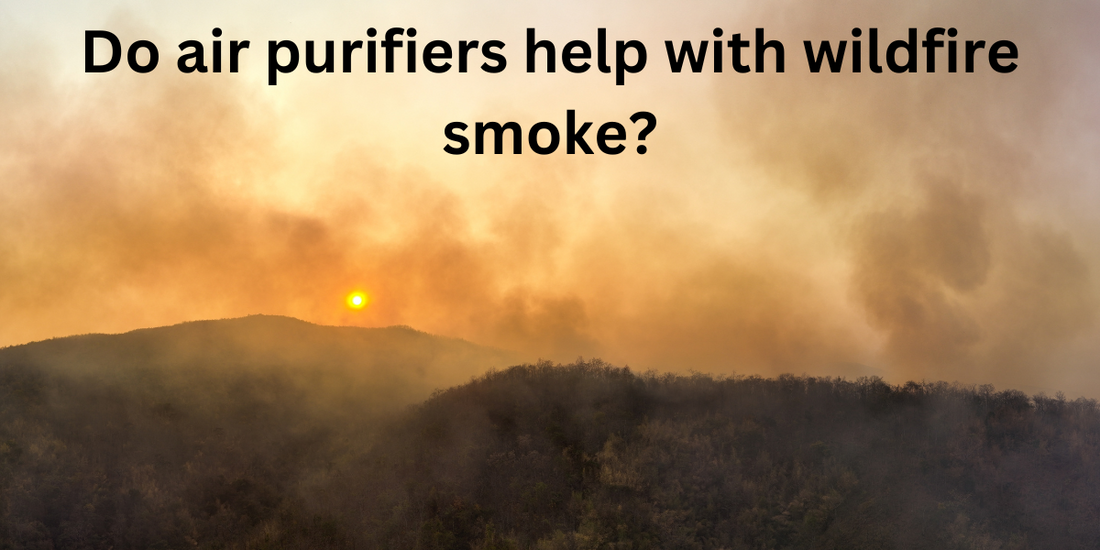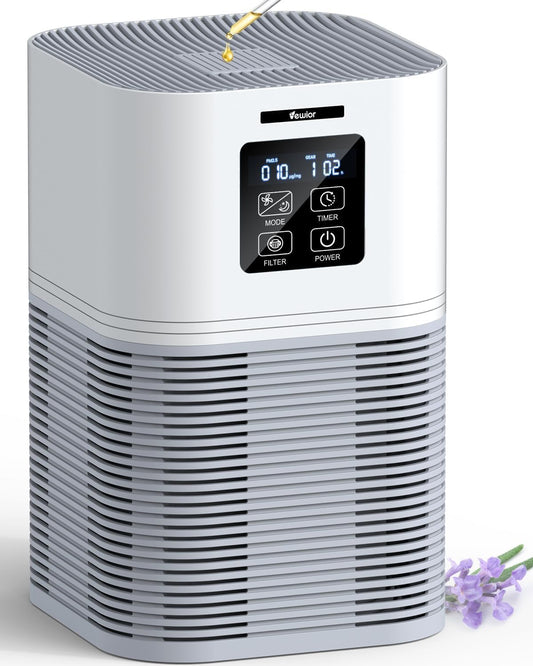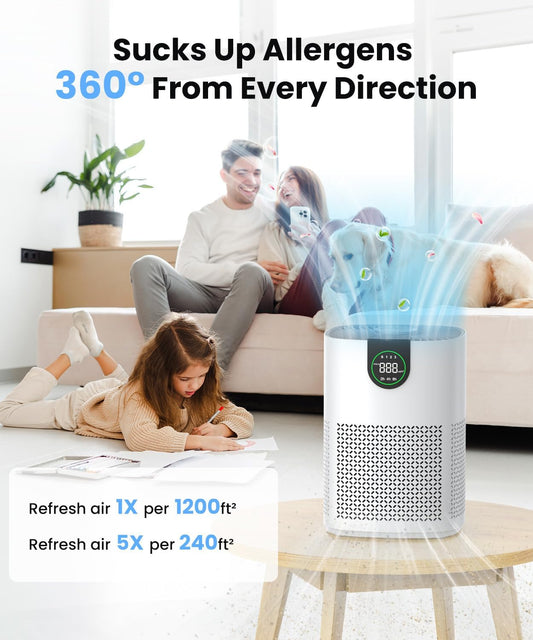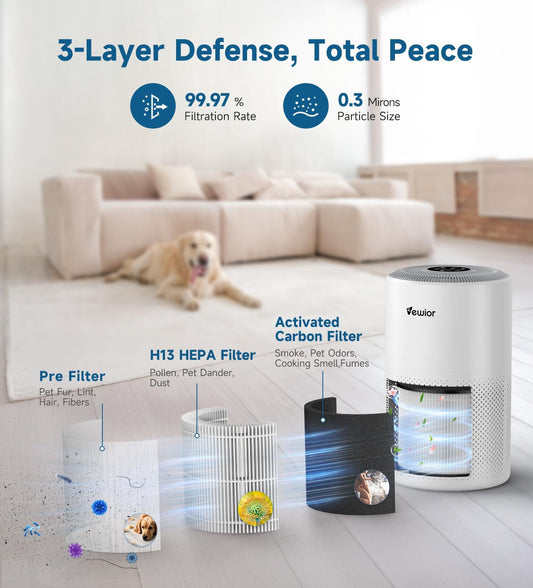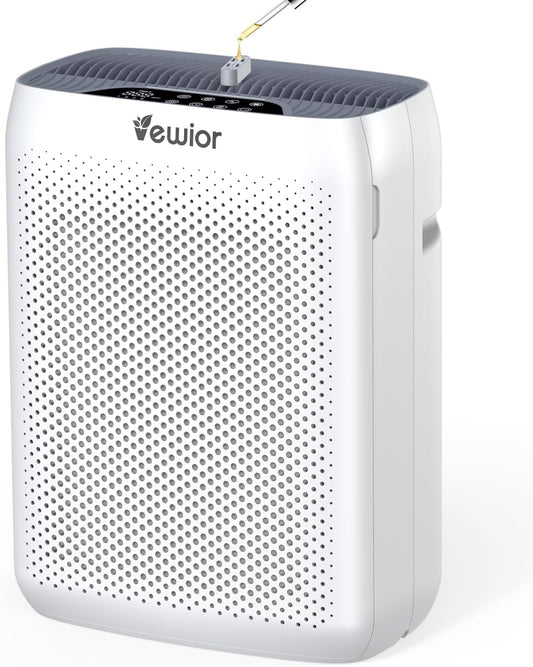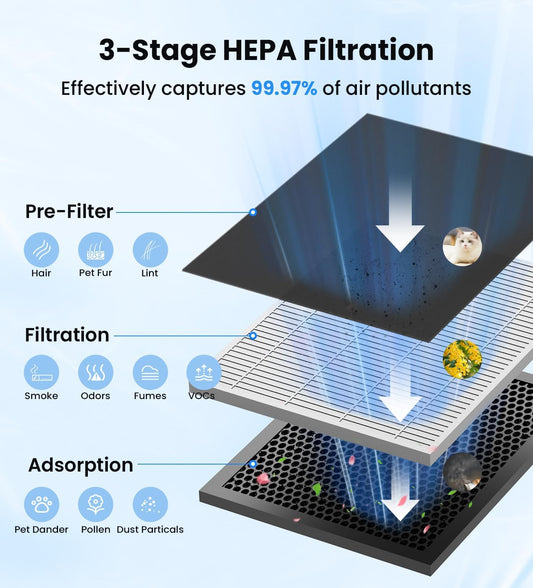Wildfires have become increasingly common, causing significant damage to the environment and posing health risks to individuals exposed to the resulting smoke. Breathing in wildfire smoke can lead to various respiratory issues and exacerbate existing conditions. In such situations, air purifiers are often recommended as a means to mitigate the harmful effects of wildfire smoke. This essay explores the effectiveness of air purifiers in addressing wildfire smoke, considering their filtration capabilities, specific features to look for, and the importance of proper usage.
Understanding Wildfire Smoke and its Hazards
Wildfire smoke consists of a complex mixture of gases and fine particulate matter that can penetrate deep into the respiratory system. These fine particles, known as PM2.5 (particulate matter smaller than 2.5 micrometers), are particularly concerning due to their ability to bypass the body's natural defense mechanisms and enter the bloodstream, potentially causing a range of health issues.
Exposure to wildfire smoke can lead to respiratory problems such as coughing, wheezing, shortness of breath, and aggravated asthma symptoms. It can also cause eye and throat irritation, headaches, and fatigue. Long-term exposure to wildfire smoke has been linked to more serious health conditions, including cardiovascular diseases and respiratory infections.
Effectiveness of Air Purifiers in Addressing Wildfire Smoke
Air purifiers can help reduce the concentration of PM2.5 and other harmful pollutants present in wildfire smoke. The effectiveness of air purifiers in addressing wildfire smoke primarily depends on their filtration capabilities, specifically their ability to capture fine particles.
High-Efficiency Particulate Air (HEPA) filters are the gold standard when it comes to particle filtration. These filters can trap and remove particles as small as 0.3 microns with an efficiency of up to 99.97%. Therefore, air purifiers equipped with true HEPA filters are highly effective in reducing PM2.5 levels in indoor environments.
To ensure the best possible filtration of wildfire smoke, it is recommended to select an air purifier that specifically mentions its ability to handle smoke particles or has a smoke-specific filtration feature. This ensures that the air purifier is designed to address the unique challenges posed by wildfire smoke.
Features to Look for in Air Purifiers for Wildfire Smoke
When choosing an air purifier for mitigating the effects of wildfire smoke, several features can enhance its effectiveness:
- Activated Carbon Filters: Alongside HEPA filters, activated carbon filters are beneficial in capturing and neutralizing smoke odors and volatile organic compounds (VOCs) present in wildfire smoke. These filters contain activated carbon, which has a porous structure that can absorb and trap smoke-related gases, helping to improve indoor air quality.
- Air Changes per Hour (ACH): ACH refers to the number of times an air purifier can cycle the entire volume of air within a room in one hour. To effectively address wildfire smoke, it is recommended to choose an air purifier with a high ACH rating. A higher ACH ensures that the air in the room is filtered more frequently, reducing the concentration of smoke particles.
- Coverage Area: Select an air purifier that can adequately cover the square footage of the room or area where it will be used. The coverage area should align with the size of the space to ensure optimal air purification and efficient removal of wildfire smoke particles.
- Smart Sensors and Auto Mode: Some advanced air purifiers come with smart sensors that detect the level of pollutants in the air and adjust the purification settings accordingly. Auto mode allows the air purifier to automatically adjust its fan speed and filtration intensity based on the current air quality, optimizing performance and reducing energy consumption.
Proper Usage of Air Purifiers for Wildfire Smoke
To maximize the effectiveness of air purifiers in mitigating the effects of wildfire smoke, proper usage is crucial. Here are some key considerations:
- Keep Windows and Doors Closed: During periods of high wildfire activity and heavy smoke, it is essential to keep windows and doors closed to prevent outside air from entering the indoor environment. This helps maintain the effectiveness of the air purifier by minimizing the introduction of additional smoke particles.
- Run the Air Purifier Continuously: To ensure continuous filtration and maintain clean indoor air, it is recommended to run the air purifier continuously, especially during periods of heavy smoke. This helps to maintain a lower concentration of smoke particles inside the space.
- Position the Air Purifier Strategically: Place the air purifier in the room or area where it can have the most impact. Consider factors such as the source of smoke infiltration, the size and layout of the space, and the airflow patterns. Placing the air purifier near the source of smoke or in the central area of the room can enhance its efficiency.
Conclusion
Air purifiers equipped with HEPA filters and activated carbon filters can be highly effective in reducing the concentration of PM2.5 and other harmful pollutants present in wildfire smoke. When selecting an air purifier for addressing wildfire smoke, look for specific features such as smoke-specific filtration, activated carbon filters, high ACH ratings, and appropriate coverage area. Remember to use the air purifier continuously, keep windows and doors closed, and position the unit strategically for optimal results. By employing air purifiers correctly, individuals can create cleaner and healthier indoor environments even during periods of heavy wildfire smoke.

